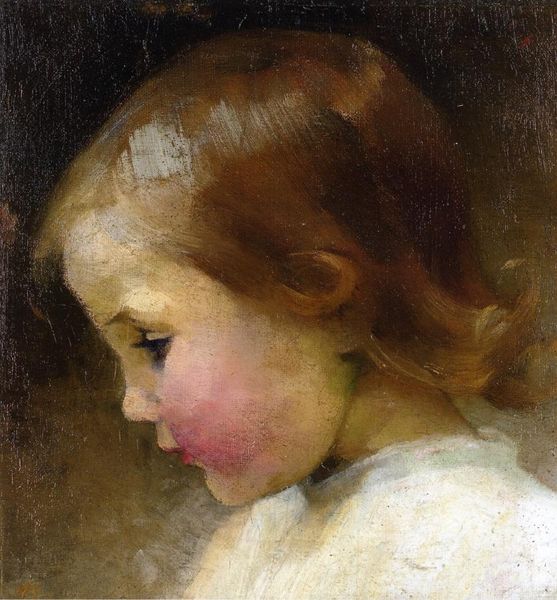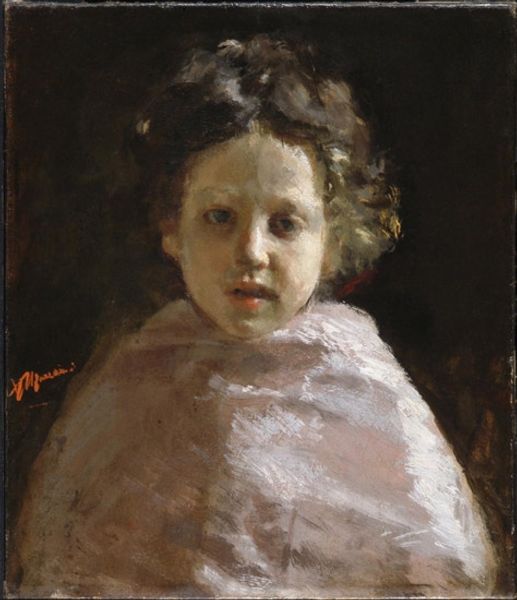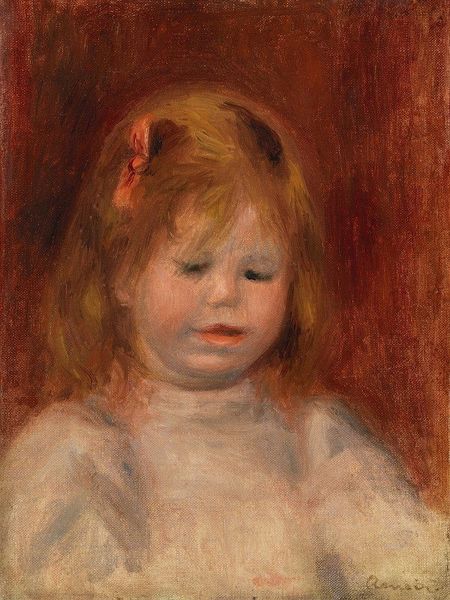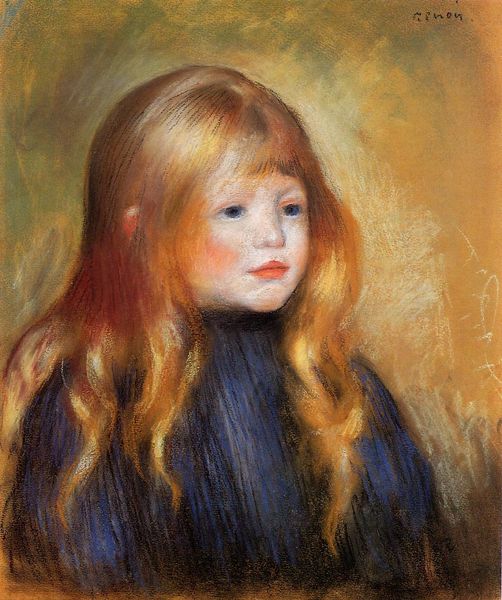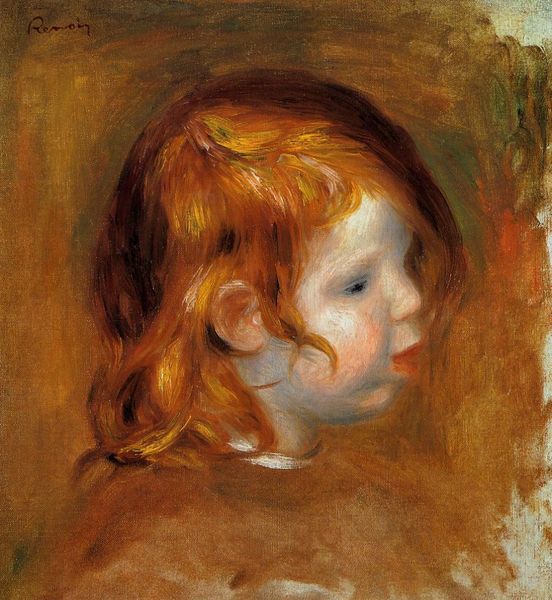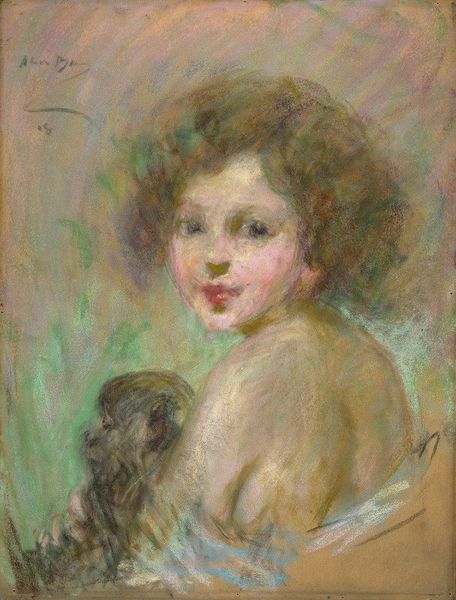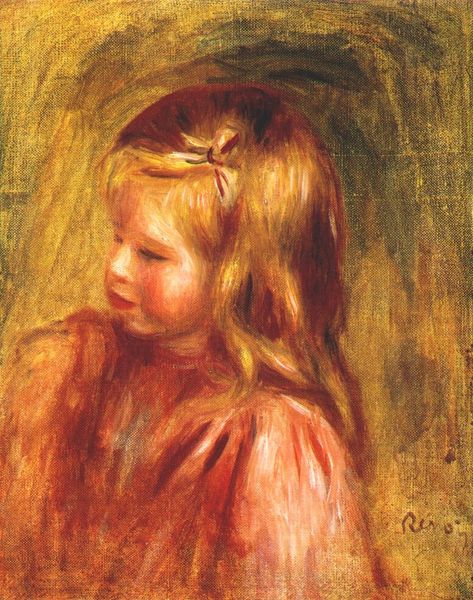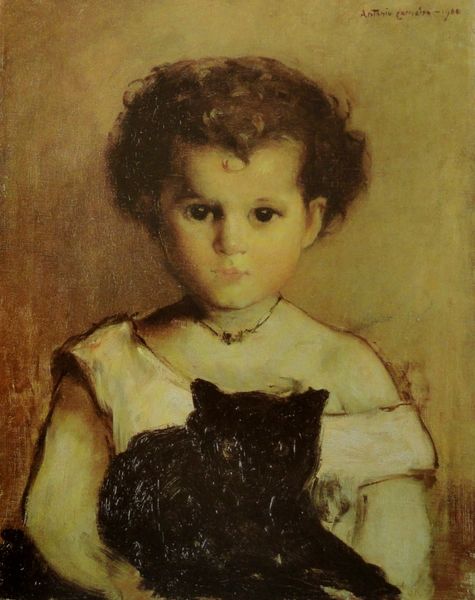
Copyright: Public domain
Curator: Eugène Carrière, working in 1902, rendered this haunting portrait of Elisabeth, daughter of the art critic Élie Faure. Painted with oils, the work is imbued with a soft, almost ethereal quality. Editor: My first impression is one of subdued melancholy. The monochromatic palette and diffused light give it a dreamlike quality, as if she’s emerging from the depths of memory. It reminds me of those faded photographs you find tucked away in old books. Curator: The limited color palette certainly enhances that sense of faded memory. Carrière was fascinated by rendering emotions and psychological states, and he often employed this hazy, sfumato technique. The swirling brushstrokes almost dematerialize the subject. Editor: Absolutely. It feels like a Symbolist manifesto. Her gaze, though direct, possesses a fragile, almost translucent quality. It reflects, perhaps, the vulnerability and ephemerality of childhood itself, a potent symbol of transition. The loosely rendered landscape background also serves to further situate Elisabeth within time. Curator: Symbolism is a through-line in the work, to my eye, from the soft bow resting in her hair, to the way her pale dress disappears against the backdrop. Even her hair looks heavy. The artist also was known as the ‘painter of mothers’—often portraying mothers and children, and the way the artist renders these relationships as close and almost uterine gives insight into a wider archetype around maternal connection. Editor: The psychological nuance is so delicate. Looking closely, you see a mixture of innocence and a nascent self-awareness. In terms of artistic lineage, I can't help thinking about Rembrandt's use of chiaroscuro to reveal inner truths, as well as that dreamlike state in which early-twentieth century female sitters seem to occupy. Curator: Yes, I am reminded as well of Rembrandt, even the atmospheric quality and dramatic use of light reminds me of old black and white photography! Editor: In this work, we're left to question Elisabeth's presence: what's hidden in her stare, her fleeting emotions and what she represents for her father. She becomes an enigma within Carrière's vision. Curator: The beauty lies in its quiet introspection and its haunting ambiguity, don't you think? Editor: I couldn't agree more, the painting's emotional resonance lingers long after you look away.
Comments
No comments
Be the first to comment and join the conversation on the ultimate creative platform.
